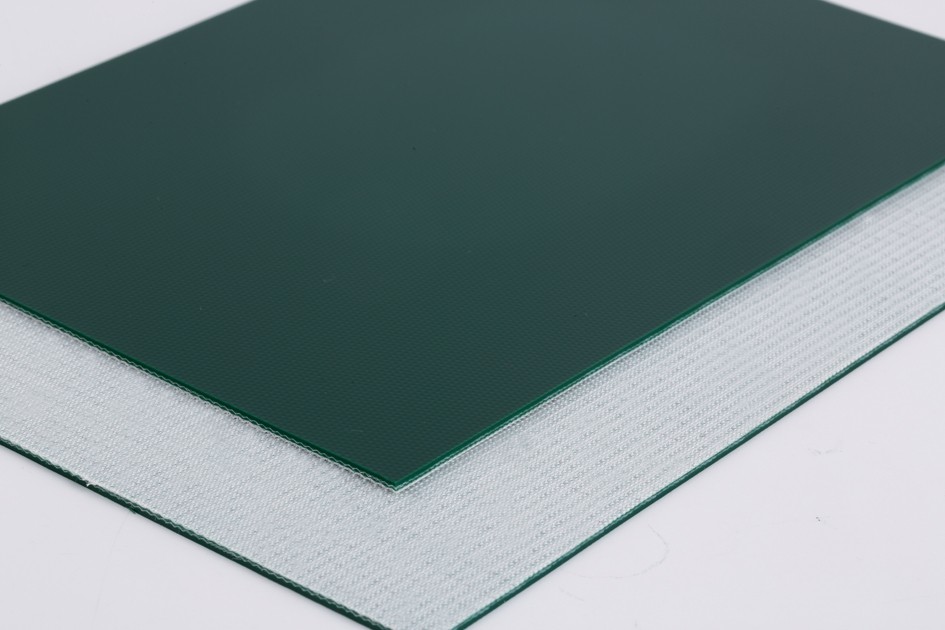Introduction
In the dynamic landscape of industrial applications, the role of static conductive belts is crucial in maintaining safety and efficiency. These specialized belts are designed to prevent static buildup and discharge, contributing to a secure working environment. This article delves into the key features and characteristics that define high-quality static conductive belts, shedding light on their significance in various industries.

Static Conductivity in Belts
Static conductivity is a fundamental property that sets certain belts apart in industrial settings. It refers to the ability of a material to conduct electrical charges and dissipate static electricity effectively. In the context of belts, static conductivity plays a vital role in preventing the accumulation of static charges, which can pose safety risks and affect the performance of electronic equipment in the vicinity.
Material Composition
The composition of materials used in high-quality static conductive belts is a critical aspect of their performance. These belts are typically made from materials with inherent conductive properties, ensuring that they can effectively carry and dissipate static charges. Common materials include a blend of conductive fibers or the incorporation of additives that enhance the overall conductivity of the belt.
Surface Resistivity
Surface resistivity is a key parameter used to measure the effectiveness of static conductive belts. It refers to the resistance of a material to the flow of electric current across its surface. High-quality static conductive belts are characterized by a specific range of surface resistivity that meets industry standards. This ensures that the belts provide reliable and consistent static dissipation, contributing to a safe working environment.
Uniform Conductivity
Achieving uniform conductivity across the entire surface of the belt is crucial for optimal performance. Inconsistent conductivity may lead to areas with higher static charges, defeating the purpose of the static conductive belt. Manufacturers of high-quality static conductive belts employ advanced technologies and processes to ensure that conductivity is uniform, thereby enhancing their overall effectiveness in preventing static-related issues.
Durability and Longevity
The durability and longevity of static conductive belts are significant considerations for industries relying on these specialized solutions. High-quality static conductive belts are designed to withstand the rigors of industrial environments. The choice of materials, construction techniques, and manufacturing processes all contribute to the longevity of the belts, reducing the need for frequent replacements and ensuring continuous performance.
Safety Features
Safety is a paramount concern in industrial settings, and static conductive belts play a crucial role in mitigating potential risks. Beyond their primary function of dissipating static charges, high-quality static conductive belts may incorporate additional safety features. These can include flame resistance, anti-slip properties, and designs that minimize the risk of accidents related to belt operation.
Compatibility with Industry Standards
Adherence to industry standards is a hallmark of high-quality static conductive belts. Various regulatory bodies and industry organizations establish standards for the performance and safety of these belts. Manufacturers committed to producing reliable products ensure that their static conductive belts comply with these standards, providing customers with the assurance that they meet recognized benchmarks for quality.
Application-specific Considerations
The versatility of high-quality static conductive belts allows for customization to meet specific industry needs. Different industrial applications may require unique features and characteristics in static conductive belts. Manufacturers work closely with industries such as electronics manufacturing, cleanroom environments, and explosive atmospheres to tailor belts that address the specific challenges posed by each application.
Testing and Quality Assurance
Ensuring the effectiveness of static conductive belts involves rigorous testing and quality assurance processes. Manufacturers employ various methods to test the static conductivity of belts, including surface resistivity measurements and performance assessments in simulated working conditions. Quality assurance protocols are in place to maintain consistent manufacturing standards and deliver reliable products to customers.
Innovation and Advancements
The landscape of static conductive belts is not static itself; it continues to evolve with technological advancements. Ongoing innovation in materials, manufacturing techniques, and belt design contributes to the improvement of key features and characteristics. Emerging technologies may enhance conductivity, durability, and safety features, pushing the boundaries of what high-quality static conductive belts can achieve.
Case Studies
Real-world examples offer insights into the practical applications and benefits of high-quality static conductive belts. In electronics manufacturing plants, these belts contribute to a static-free environment, ensuring the integrity of sensitive electronic components. In cleanroom settings, static conductive belts play a crucial role in maintaining the purity of the environment. Examining these cases provides valuable lessons on the impact of key features in specific industrial contexts.
Conclusion
In conclusion, the key features and characteristics of high-quality static conductive belts are pivotal in ensuring their effectiveness in industrial applications. From material composition and surface resistivity to uniform conductivity, durability, safety features, and compliance with industry standards, each aspect contributes to the overall performance of these specialized belts. As industries continue to evolve, so too will the innovation and advancements in static conductive belt technology, reinforcing their crucial role in creating safe and efficient working environments.





